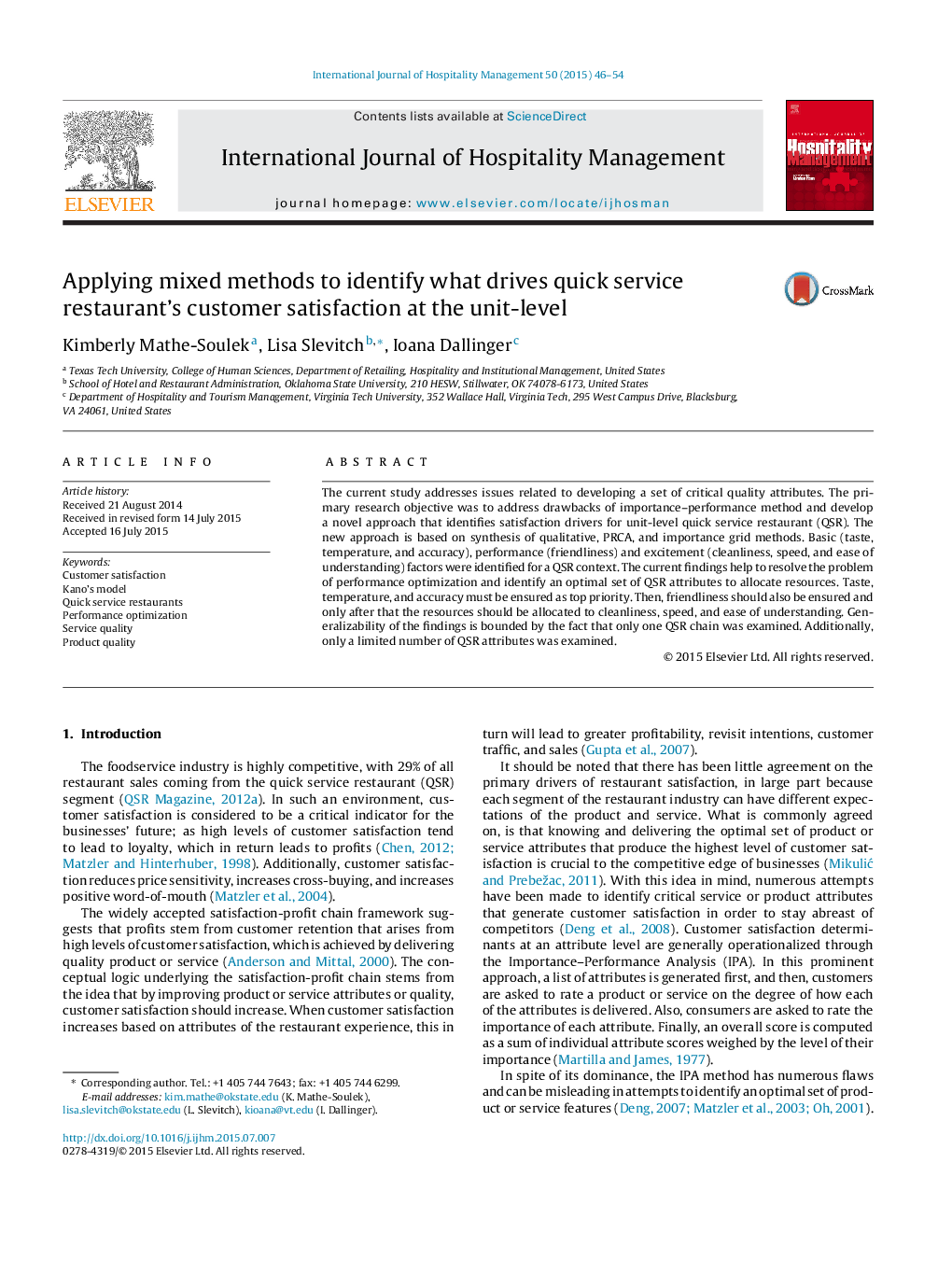| Article ID | Journal | Published Year | Pages | File Type |
|---|---|---|---|---|
| 1009246 | International Journal of Hospitality Management | 2015 | 9 Pages |
The current study addresses issues related to developing a set of critical quality attributes. The primary research objective was to address drawbacks of importance–performance method and develop a novel approach that identifies satisfaction drivers for unit-level quick service restaurant (QSR). The new approach is based on synthesis of qualitative, PRCA, and importance grid methods. Basic (taste, temperature, and accuracy), performance (friendliness) and excitement (cleanliness, speed, and ease of understanding) factors were identified for a QSR context. The current findings help to resolve the problem of performance optimization and identify an optimal set of QSR attributes to allocate resources. Taste, temperature, and accuracy must be ensured as top priority. Then, friendliness should also be ensured and only after that the resources should be allocated to cleanliness, speed, and ease of understanding. Generalizability of the findings is bounded by the fact that only one QSR chain was examined. Additionally, only a limited number of QSR attributes was examined.
